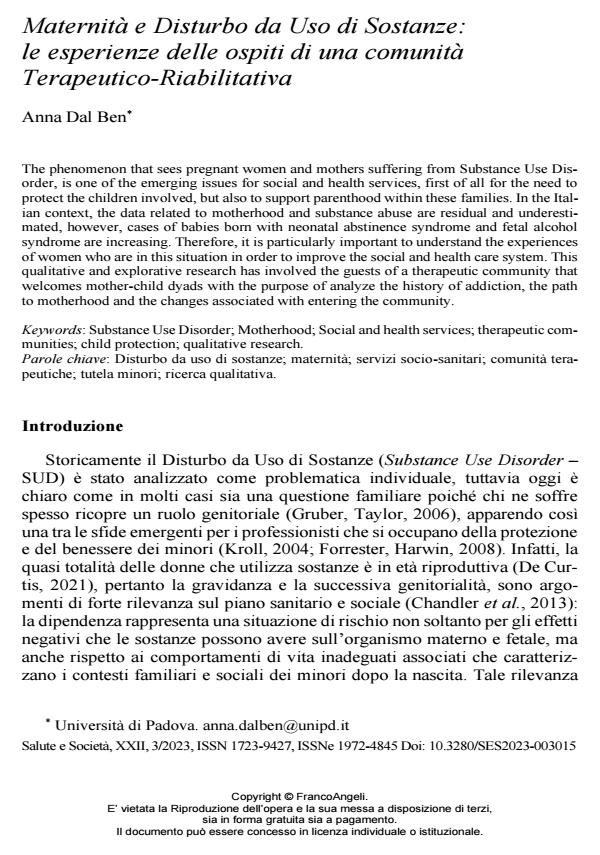Maternità e Disturbo da Uso di Sostanze: le esperienze delle ospiti di una comunità Terapeutico-Riabilitativa
Journal title SALUTE E SOCIETÀ
Author/s Anna Dal Ben
Publishing Year 2023 Issue 2023/3
Language Italian Pages 17 P. 211-227 File size 304 KB
DOI 10.3280/SES2023-003015
DOI is like a bar code for intellectual property: to have more infomation
click here
Below, you can see the article first page
If you want to buy this article in PDF format, you can do it, following the instructions to buy download credits

FrancoAngeli is member of Publishers International Linking Association, Inc (PILA), a not-for-profit association which run the CrossRef service enabling links to and from online scholarly content.
The phenomenon that sees pregnant women and mothers suffering from Substance Use Dis-order, is one of the emerging issues for social and health services, first of all for the need to protect the children involved, but also to support parenthood within these families. In the Ital-ian context, the data related to motherhood and substance abuse are residual and underestimat-ed, however, cases of babies born with neonatal abstinence syndrome and fetal alcohol syn-drome are increasing. Therefore, it is particularly important to understand the experiences of women who are in this situation in order to improve the social and health care system. This qualitative and explorative research has involved the guests of a therapeutic community that welcomes mother-child dyads with the purpose of analyze the history of addiction, the path to motherhood and the changes associated with entering the community.
Keywords: Substance Use Disorder; Motherhood; Social and health services; therapeutic communities; child protection; qualitative research.
Anna Dal Ben, Maternità e Disturbo da Uso di Sostanze: le esperienze delle ospiti di una comunità Terapeutico-Riabilitativa in "SALUTE E SOCIETÀ" 3/2023, pp 211-227, DOI: 10.3280/SES2023-003015